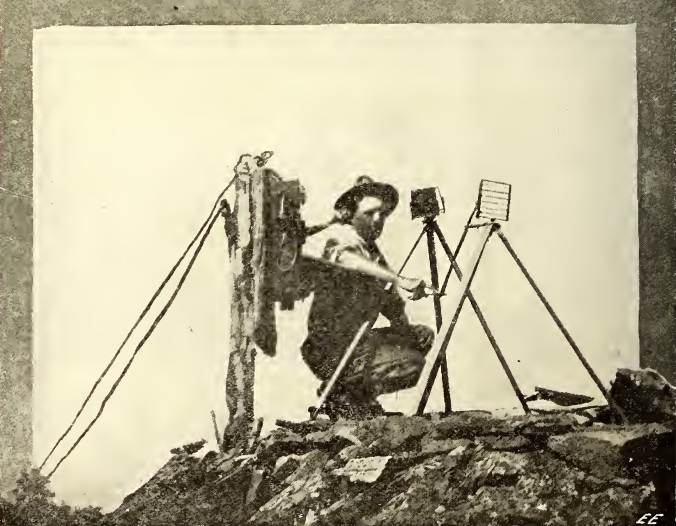 One hundred years ago, the forest ranger shown here is acting as “lookout man” atop some Western peak. As he watches for forest fires, he has at his disposal detailed maps of the area, as well as two means of communication. When he spots a fire, he can call in the bearing to headquarters on the telephone. To communicate with other spotters in areas too remote for a phone, he has the heliograph. On clear sunny days, the device had a range of up to 45 miles.
One hundred years ago, the forest ranger shown here is acting as “lookout man” atop some Western peak. As he watches for forest fires, he has at his disposal detailed maps of the area, as well as two means of communication. When he spots a fire, he can call in the bearing to headquarters on the telephone. To communicate with other spotters in areas too remote for a phone, he has the heliograph. On clear sunny days, the device had a range of up to 45 miles.
The first Forest Service heliograph units had originated with the Army Signal Corps, but more compact units suited to forest fire fighting were procured. Seven rangers were initially trained. Even though they had no prior knowledge, they became proficient operators in a very short time.
While Morse Code could be used, it was found that the Myer Code, shown below, was more reliable for visual signaling. The letter P, for example, is 1211. The one indicates a long flash, and the 2 indicates two short flashes.
The top photo appeared in the November 1919 issue of Electrical Experimenter. More details of the system can be found in a 1914 Forest Service Publication, Systematic Fire Protection in the California Forests. The heliograph instrument consisted of a mirror, which was oriented so that it reflected the sun on the receiving station. A shutter in front of the mirror was used to key the beam on and off. To call another station, the sending station would send a quick succession of flashes until acknowledged. Then, each station would turn on a steady flash to make adjustments. When the mirrors were in place, the sending station would proceed with its message. The average speed of transmission was found to be about four words per minute.
Plans for a simple heliograph can be found at an earlier post.

